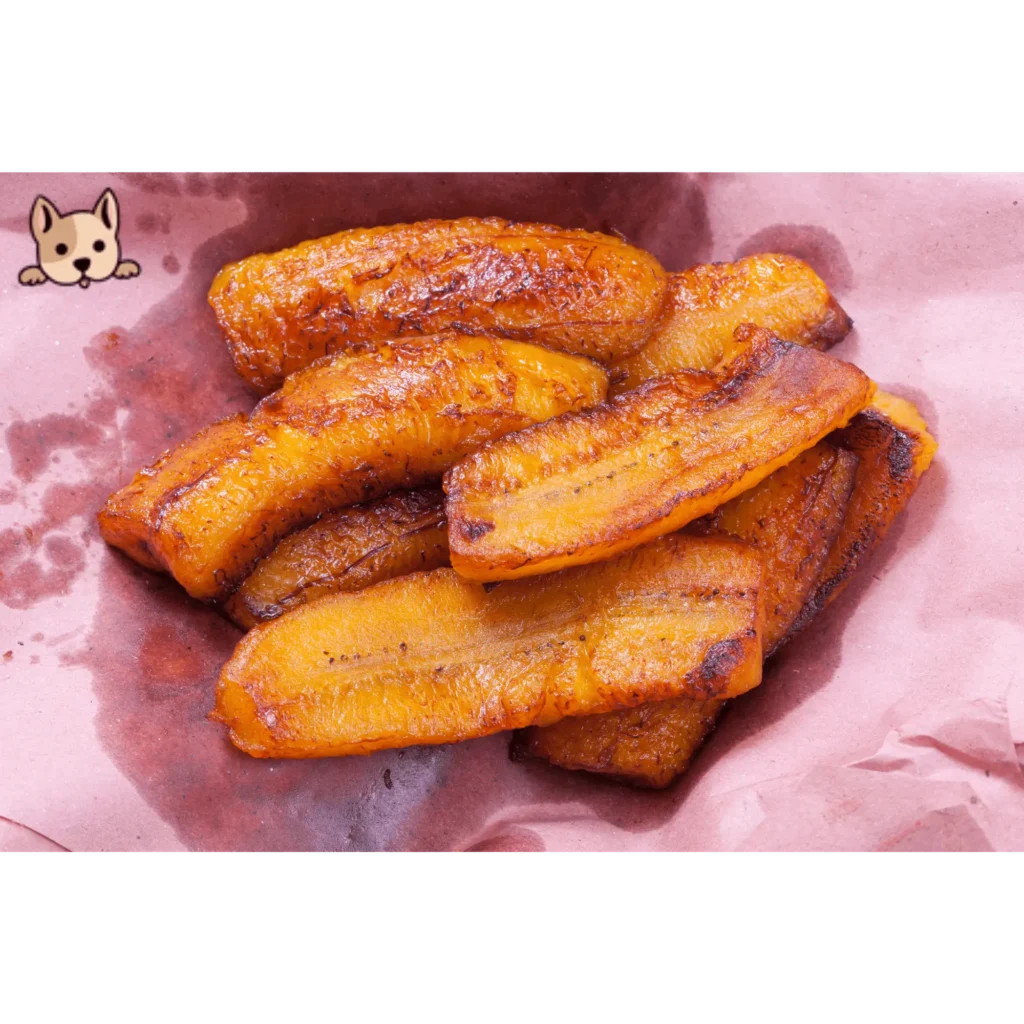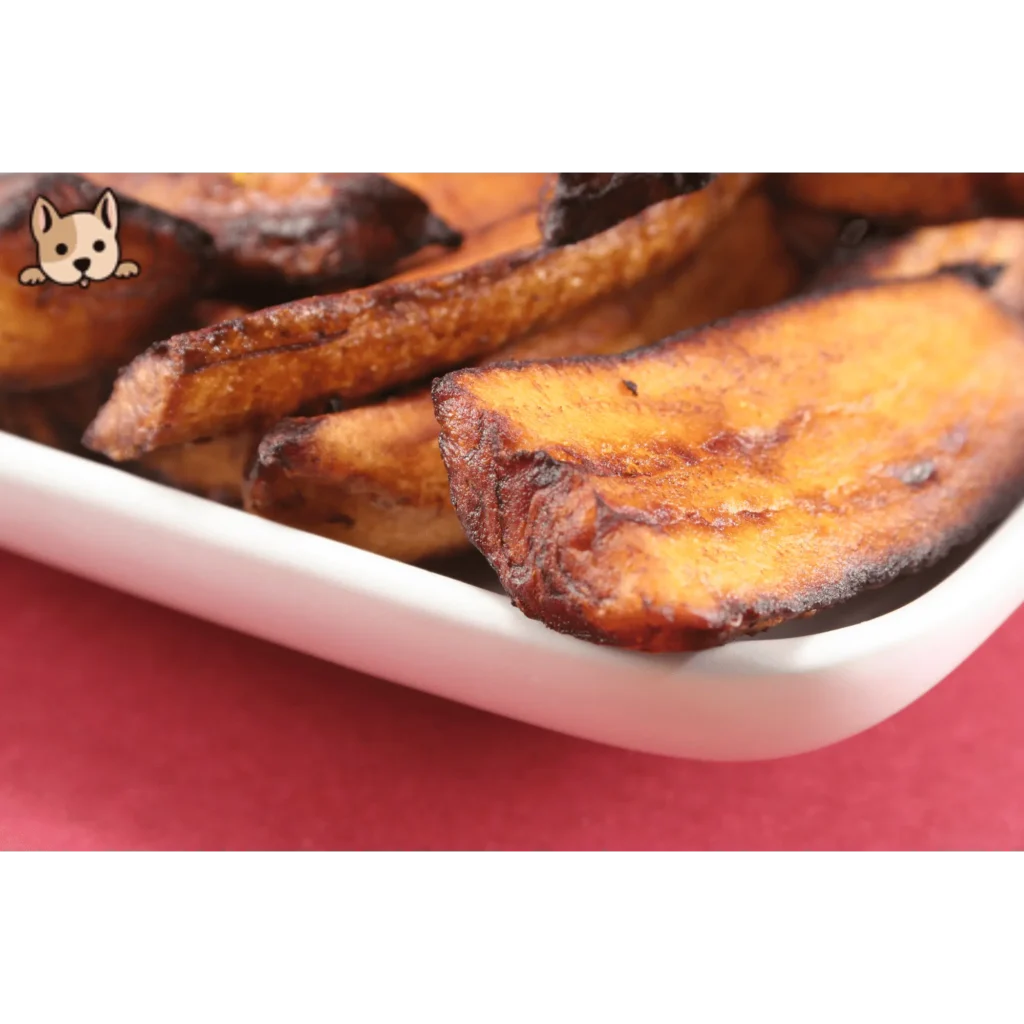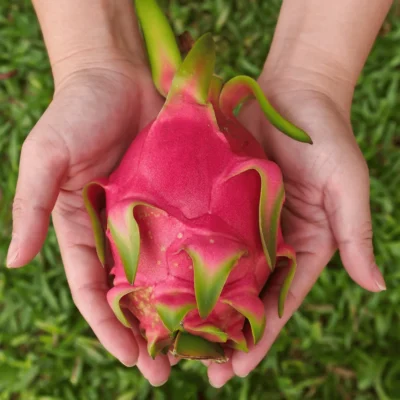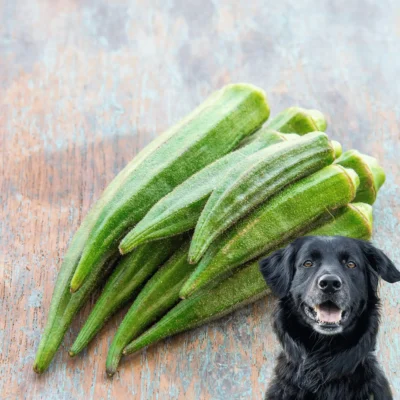As dog owners, we’re always looking for healthy and delicious treats to pamper our furry friends. But when it comes to unusual foods like plantains, the question arises: Can dogs eat plantains? Their unique flavor and texture might seem like an enticing option, but understanding their suitability for our canine companions is crucial.
In this article, we will delve into the question of whether dogs can eat plantains. We will explore the potential health benefits and risks associated with feeding plantains to your furry companions. Additionally, we will discuss how to properly prepare plantains for dogs to ensure their safety and enjoyment.
Here are the topics we’ll discover in this blog post:
- What are Plantains?
- Can Dogs Eat Plantains?
- 7 Health Benefits of Plantains for Your Dogs
- Potential Risks of Plantain for Dogs
- How to Harvest Plantain Herb?
- How to Prepare Plantain for Your Dog’s Consumption?
- How to Serve Plantain to Your Dog?
What are Plantains?

Plantains are sizable fruits resembling bananas but with firmer, starchier flesh. When unripe, their peel can vary from green to yellow, while ripe plantains exhibit a darker, blackened skin.
Growing in clusters on trees like bananas, plantains are typically cultivars of Musa × paradisiaca. It’s important to distinguish them from other plants like the broadleaf plantain (Plantago major) and plantain lily (Hosta plantaginea), neither of which produce fruits.
Plantains are typically used in cooking and are often treated more like a vegetable than a fruit due to their firm texture and neutral flavor when unripe. They can be boiled, fried, grilled, or baked and are used in a variety of savory dishes across different cuisines.
Plantains are rich in complex carbohydrates, dietary fiber, vitamins, and minerals, making them nutritious and versatile ingredients in both savory and sweet recipes. Their distinct characteristics make plantains a beloved ingredient in cuisines around the world, and their Culinary versatility continues to inspire innovative dishes that delight taste buds and nourish bodies.
Can Dogs Eat Plantains?
Dogs can enjoy small amounts of cooked plantains, but it’s essential to avoid feeding them raw plantains, as they pose a choking hazard. To safely incorporate plantains into your dog’s diet, bake or boil them to soften before slicing them into small, manageable pieces.
However, it’s crucial to consult with your veterinarian beforehand to ensure you’re not adding excessive sugar or carbohydrates to your dog’s regular diet. This precaution helps maintain your dog’s overall health and well-being while introducing new foods in moderation.
7 Health Benefits of Plantains for Your Dogs:

Plantains can offer several health perks for dogs when incorporated into their diet in moderation.
1. Nutrient-Rich:
Plantains are a nutrient-rich food source for dogs, offering a wide array of essential vitamins, minerals, and other beneficial compounds. They contain vitamins A, C, and B6, which support immune function, vision, and brain health.
Additionally, plantains provide minerals such as potassium and magnesium, crucial for regulating fluid balance, muscle function, and bone health.
2. Digestive Health:
Plantains are rich in dietary fiber, aiding in regular bowel movements and preventing constipation. Plantains contain resistant starch, acting as a prebiotic to promote the growth of beneficial bacteria in the colon.
By supporting the growth of beneficial bacteria, plantains help improve the balance of gut flora, potentially reducing the risk of digestive issues like diarrhea or gastrointestinal upset.
Including plantains in your dog’s diet can contribute to digestive health and overall well-being, but it’s crucial to introduce them gradually and monitor your dog’s response.
3. Energy Source:
Plantains are rich in complex carbohydrates, providing dogs with a source of sustained energy. The carbohydrates in plantains help maintain stable blood sugar levels, preventing energy crashes and promoting consistent energy throughout the day.
Plantains can benefit working dogs, such as those involved in agility or sports, by providing them with the energy required for performance and endurance. Plantains can serve as a nutritious and energy-boosting snack option for dogs, especially during periods of increased activity or exercise.
4. Low in Fat:
Plantains are naturally low in fat, making them suitable for dogs requiring a low-fat diet. Incorporating plantains into a dog’s diet can support weight management efforts, as they provide energy without contributing excess fat. Dogs with pancreatitis or other fat-sensitive conditions can safely enjoy plantains as part of their balanced diet without exacerbating their condition.
Plantains offer a low-fat alternative to higher-fat treats, making them a healthier option for dogs watching their fat intake. By providing energy from carbohydrates rather than fat, plantains contribute to a balanced diet that supports overall health and well-being in dogs.
5. Antioxidant Properties:
Plantains contain antioxidants such as vitamin C and flavonoids, which help neutralize harmful free radicals in the body. Regular consumption of plantains may reduce the risk of chronic diseases associated with oxidative stress, including cancer, heart disease, and cognitive decline.
The immune-boosting properties of antioxidants help support a strong immune system in dogs, enhancing their ability to fight off infections and illness.
6. Heart Health:
Plantains are a good source of potassium, a mineral essential for maintaining heart health in dogs. Potassium helps regulate blood pressure levels, reducing the risk of hypertension and supporting cardiovascular function.
Potassium plays a crucial role in maintaining proper electrolyte balance in the body, which is essential for heart rhythm and muscle function. The combination of potassium and other nutrients in plantains contributes to overall cardiovascular support, promoting heart health and longevity in dogs.
7. Skin and Coat Health:
Plantains contain vitamin A, which is essential for maintaining healthy skin and coat in dogs. Vitamin A contributes to a shiny, lustrous coat by promoting the production of oils that keep the skin and fur moisturized and supple.
Vitamin A plays a role in wound healing, supporting the skin’s ability to repair and regenerate in response to injuries or irritations. Including plantains in a dog’s diet can help support overall skin health, contributing to a soft, smooth coat and healthy, resilient skin.
As with any new food, it’s important to introduce plantains to your dog’s diet gradually and in moderation. Monitor your dog for any adverse reactions or digestive issues, and consult with your veterinarian if you have any concerns about incorporating plantains into their diet.
Potential Risks of Plantain for Dogs:

Plantains, while not inherently toxic to dogs, can pose potential risks if consumed in large quantities or inappropriately prepared. Here are some considerations for dog owners regarding the risks associated with plantains:
1. Digestive Upset:
Like many fruits, plantains contain natural sugars and fiber. While small amounts may not cause issues for most dogs, consuming large quantities of plantains can lead to digestive upset, including diarrhea and stomach discomfort.
2. High Caloric Content:
Plantains are relatively high in calories compared to some other fruits and vegetables. Feeding excessive amounts of plantains to your dog without accounting for their calorie intake can contribute to weight gain and obesity, which can lead to various health problems.
3. Choking Hazard:
Plantains can be dense and sticky, especially when raw. If not adequately chewed or if large pieces are swallowed whole, they may pose a choking hazard to dogs, particularly small breeds or those prone to gulping their food.
4. Allergic Reactions:
While rare, some dogs may be allergic to plantains or develop sensitivities to certain compounds found in them. Signs of an allergic reaction in dogs may include itching, hives, facial swelling, or gastrointestinal disturbances.
5. Preparation Methods:
The way plantains are prepared can also impact their suitability for dogs. Fried or heavily processed plantain dishes, such as plantain chips or tostones, are often high in fat, salt, and other additives that are not suitable for canine consumption.
In conclusion, while plantains can be offered to dogs as an occasional treat in small, appropriately prepared quantities, it’s essential to consider the potential risks associated with their consumption.
How to Harvest Plantain Herbs?
Plantain can be harvested for various uses, whether it’s for topical applications or dietary purposes for your dog. Here are some tips for harvesting plantains:
1. Timing:
For feeding purposes, it’s best to harvest plantain leaves when they’re young and before they go to seed. While the leaves may be tougher at this stage, they are still suitable for consumption by your dog. Additionally, you’ll want to collect the seeds, although it may take a significant amount of seed stems to gather enough seeds for dietary fiber.
2. Location:
Harvest plantains from areas where pesticides haven’t been used, such as your own yard. Avoid collecting plantains from public areas that may have been sprayed with chemicals. Also, steer clear of plants growing near roads or in areas frequented by pets, as they may have been exposed to urine or other contaminants.
3. Harvesting:
Pick plantain leaves and seed stems after the morning dew has dried to avoid excess moisture. You can use them immediately or save some for later use by freezing them loosely. Alternatively, you can dry the leaves in the sun and store them alongside your other dried herbs.
Once you’ve harvested your plantain, you’re ready to incorporate it into your dog’s diet or use it for topical applications as needed. Always ensure that the plantain you harvest is clean and free from any contaminants before use.
How to Prepare Plantains for Your Dog’s Consumption?
Here are methods for utilizing plantain leaves and seeds for your dog’s health and well-being:
- Plantain Juice: To make plantain juice for your dog, blend or juice the entire plant with a bit of warm water. You can strain the liquid or use it as is. Store it in the fridge for up to a week or two, and add it to your dog’s dinner as needed. Start with a small amount, such as a couple of teaspoons, and monitor the results, especially if using it for digestive issues like constipation or diarrhea.
- Tea: Simmer plantain leaves into a tea, which can be given to your dog to drink or added to their dinner as needed. Again, monitor your dog’s response.
- Fresh Leaves: Crush, chew, or bruise fresh plantain leaves to release their healing oils. For minor skin irritations, rub the leaves directly onto the affected area or create a soothing poultice by mashing fresh leaves with a little cool water.
- Fresh Leaves With Food: Add torn-up fresh plantain leaves to your dog’s meals for internal health benefits. Spring is the best time to pick younger leaves for maximum potency. Offer about a teaspoon for every 20 pounds of body weight.
- Dry Leaf Poultice: Dry plantain leaves for later use and infuse them in oil for topical application, or create a poultice using dried leaves, water, and a cloth.
- Wet Seeds and Stems: Soak plantain seeds and stems in warm water or broth until a gel forms. Begin by feeding your dog a teaspoon for every 20 pounds of body weight. Add it to broth for dental health, constipation, or other issues.
- Dry Seeds and Stems: For diarrhea relief, add dry plantain seeds and stems to your dog’s food. Start with 1 teaspoon per 20 pounds of body weight and monitor the results.
Additionally, commercial plantain supplements are available in various forms, such as capsules, liquid extracts, tinctures, or teas, which can be found at health stores and pharmacies.
These methods provide various ways to incorporate the health benefits of plantains into your dog’s diet and wellness routine, but always monitor your dog’s response and consult with your veterinarian if you have any concerns or questions.
How to Serve Plantains to Your Dog?

Serving small amounts of boiled or steamed plantains periodically can be a nutritious addition to your dog’s diet. Avoid feeding them raw or fried plantains, as these may be difficult for your dog to digest.
If your dog has had an upset stomach, mashed cooked plantains can serve as a gentle recovery meal. Just ensure that the plantains are plain and haven’t been seasoned with any added sugar or other ingredients that may upset your dog’s stomach further.
As always, it’s essential to monitor your dog’s response to new foods and consult with your veterinarian if you have any concerns or questions about incorporating plantains into their diet.
Conclusion:
In conclusion, plantains can be a nutritious addition to your dog’s diet when fed in moderation and prepared properly. While they offer several health benefits, including digestive support, energy provision, and immune system modulation, it’s essential to be mindful of potential risks such as digestive upset and choking hazards.
By harvesting and preparing plantago major thoughtfully, you can safely incorporate them into your dog’s meals or utilize them for topical applications as needed. However, always monitor your dog’s response and consult with your veterinarian if you have any concerns or questions about introducing plantains into their diet. With proper care and moderation, plantains can be a tasty and beneficial treat for your beloved canine companion.
FAQs:
1. Are plantains OK for dogs?
Cooked plantains, like vegetable bananas, are okay for dogs in small amounts. But don’t give them too much. Plantains have fiber and some good stuff that can help your dog, but introduce them slowly and watch for any problems.
2. Can dogs be allergic to plantains?
Broadleaf plantains are safe for dogs and can boost their health. It’s loaded with antioxidants and fiber, which can help with digestion and support the immune system. While allergic reactions are rare, it’s always wise to introduce new foods slowly and monitor your dog for any unusual responses.
3. Are fried plantains bad for dogs?
It’s best to avoid feeding fried plantains to dogs. Fried foods are high in unhealthy fats and calories, which can contribute to weight gain and health issues like pancreatitis in dogs.
4. Is boiled plantain good for dogs?
Cooked plantains are safe for dogs to eat and can provide beneficial nutrients such as dietary fiber, vitamins A, C, B6, magnesium, and potassium. It’s important to cook the plantains before serving them to your dog, similar to how you would prepare potatoes. Steaming plantains is a recommended method, as it helps retain the most nutrients.












